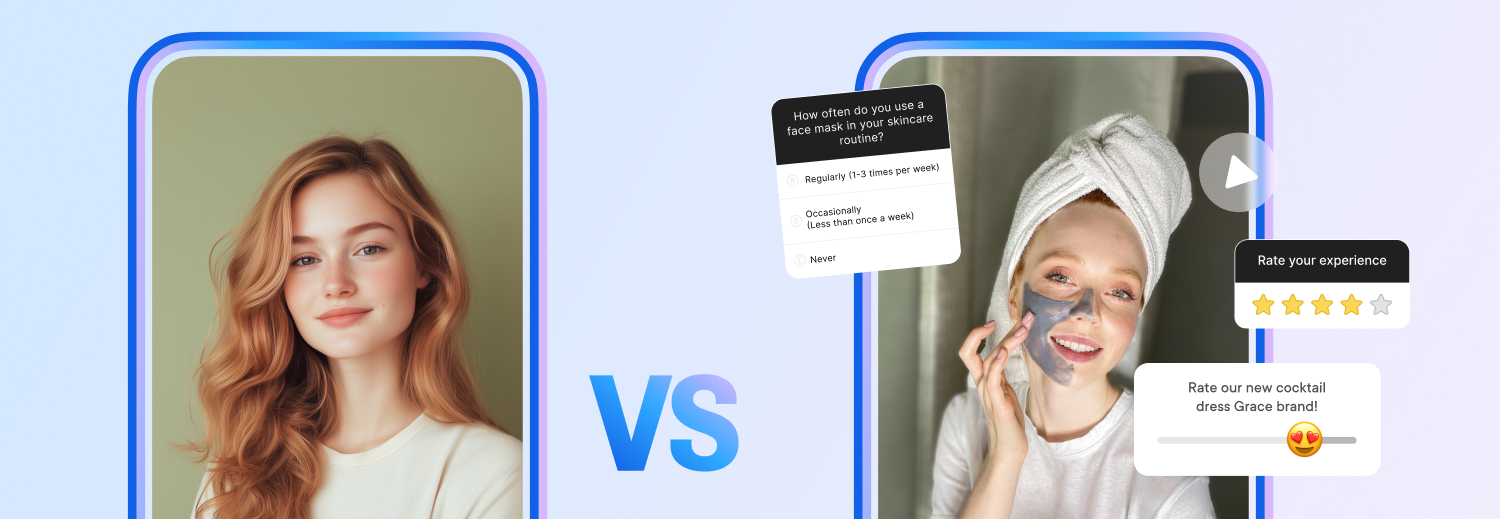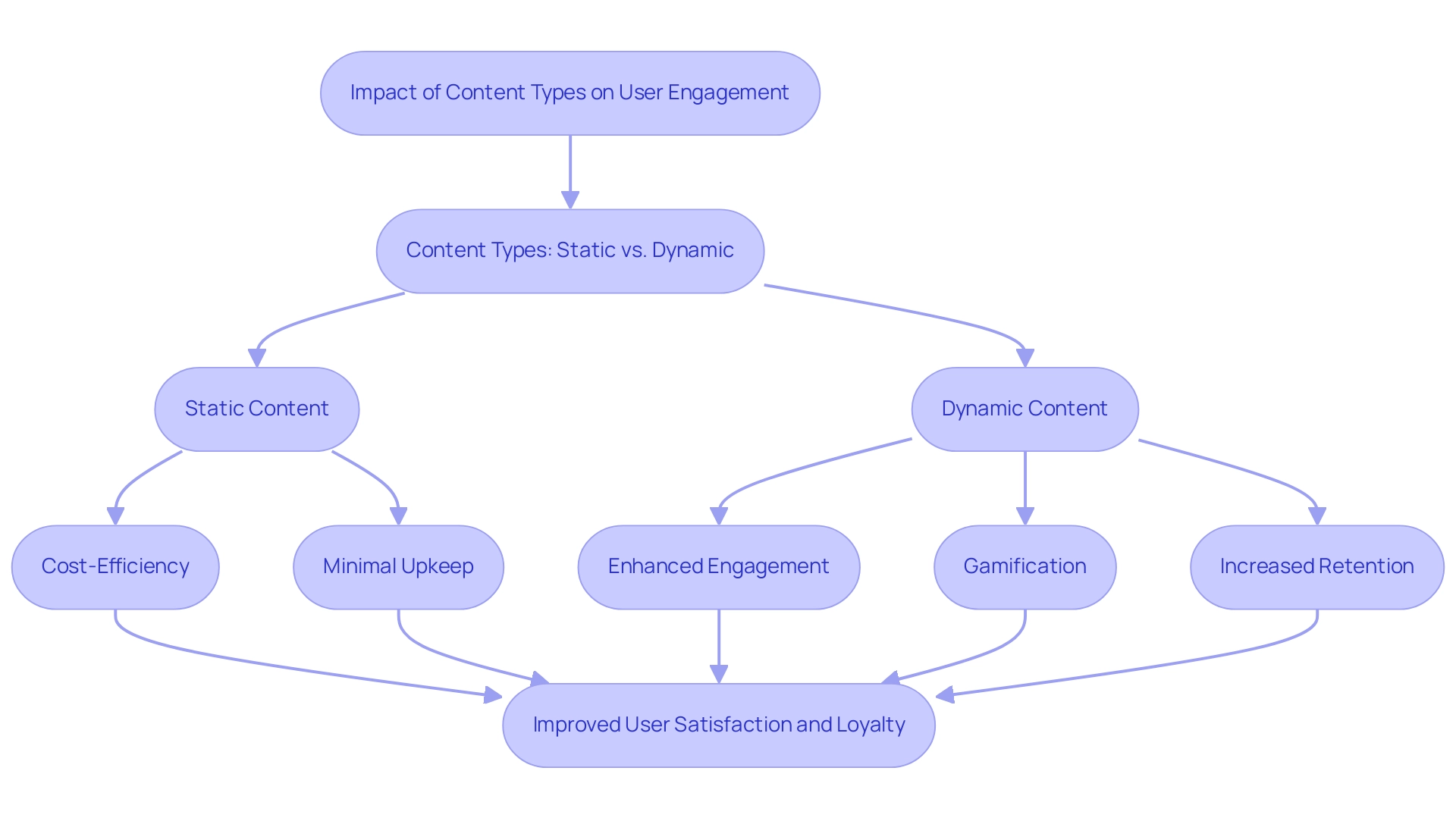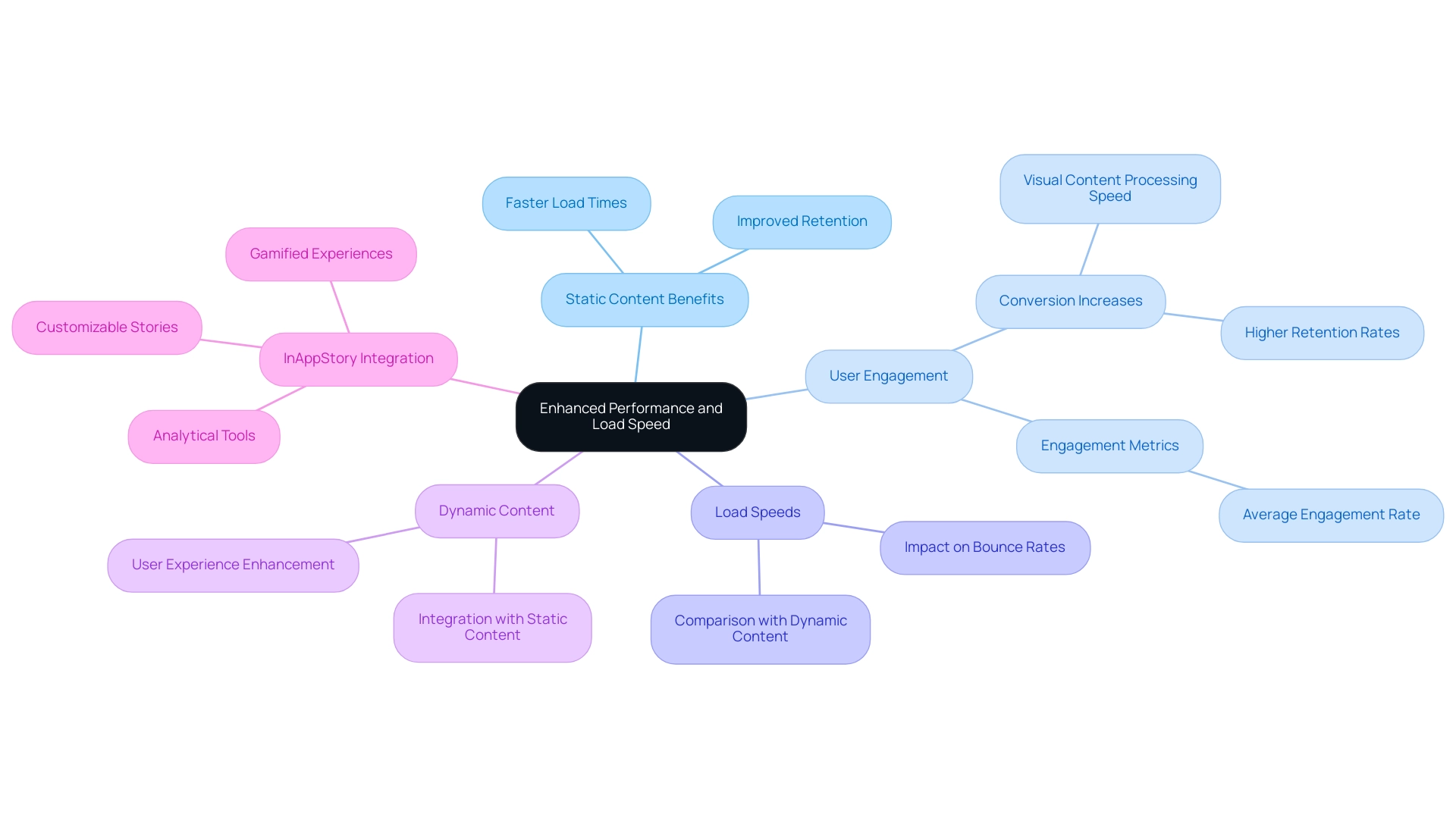.jpg?2025-11-14T09:43:42.256Z)
TOP 12 In-App Gamification Campaigns

Static + Interactive: A Duo Worth Investing In, or Should You Play It Safe With Static + Static?
Think back to your mobile app for a moment. What was the last thing you tapped on because you really wanted to, not because you just had to? If you're drawing a blank, you're probably among the millions of users stuck in the purgatory of stale apps: static banners, repetitive content, and monotonous "notifications-from-hell."
Let's face it — users are bored. And boredom, dear marketers and product managers, is the silent killer of retention and engagement. The average smartphone holds around 80 apps, but users only actively engage with nine. The rest? Digital dust collectors, swiftly abandoned or forgotten.
So here's your fork in the road: Should your app stick to the safer shores of static content alone, or set sail toward interactive experiences? Time to explore both routes.
Static vs Dynamic Content
When comparing static vs dynamic content, it’s crucial to understand their roles clearly because the confusion can cost you dearly.
Static content is your app’s evergreen baseline: stable, unchanged, and reliable, perfect for foundational info like terms, navigation guides, or straightforward announcements.
Dynamic content, on the other hand, adapts in real-time, personalizing itself based on user behaviors, preferences, and engagement history.

For example, static banners showing generic promotions perform predictably. Yet dynamic banners tailored to past behaviors or interactive input routinely outperform static ones, yielding higher click-through rates and deeper user insights.
The takeaway? Static content offers consistency, but dynamic content builds relationships. Let’s dive deeper and take a closer look at the strengths and pitfalls of each approach in the sections that follow.
What is Static Content
In the simplest terms, static content is any piece of text, image, or media in your mobile app (or website) that remains the same for every viewer unless you deliberately change it on the back end. No polls. No tapping to reveal hidden goodies. No real-time personalization. Just a consistent, unchanging display of information. Think of it like a billboard on the side of the road: it’s straightforward and reliable, but it won’t greet each new driver by name.
That’s part of the appeal of static content: it’s stable, often loads faster, and can be easier to maintain. Marketers love the pizzazz of interactive experiences, yet seasoned product managers know there’s a time and place for the tried-and-true.
If your brand or app never offered static content (like an FAQ page, a set of product descriptions, or a carefully crafted About Us statement), users would have nowhere to look for a quick reference or a calm, consistent message.
But you might wonder, “What does static mean in a story?” A “story” in marketing often conjures up images of swipeable slides, clickable pop-ups, or ephemeral content reminiscent of popular social media features. However, static content can live there too.
A story with static text or images can set a scene, provide essential facts, or guide users through a narrative without requiring them to tap or interact. Static slides could even serve as the scaffolding for more dynamic layers you might add later.
So before we wave goodbye to “old-school” content, let’s take a closer look. The next section unpacks why static content still packs a serious punch in the mobile world.
Why Static Content Still Matters
1.1 Clarity and Speed
When you’re dealing with static content, the path from creation to user view is often short and sweet. There’s less behind-the-scenes coding. The load times? Generally quicker, because your system isn’t crunching real-time data or generating interactive elements on the fly.
Imagine a mobile banking app: users want interest rates, branch locations, and terms of service — fast. That’s what static content delivers. Sure, you could pop up an interactive Q&A module, but sometimes speed wins over fancy features.
1.2 Stability and Trust
What does static mean in a story about brand credibility? Think of it this way: a static screen rarely breaks. You’re not juggling complex features or data streams; you’re just presenting the same (hopefully well-crafted) message to everyone. This reliability fosters trust.
One marketing director from a cybersecurity firm told, “Whenever we updated content in real time, there was a small but alarming chance something would glitch.” So they kept core product details as static content to reassure users that the information would be accurate every time they opened the app.
1.3 Straight Talk
Picture a scenario where your user just wants the facts, right here and right now. Let’s say a traveler is checking your tourism app for visa requirements or local COVID guidelines (yes, still valid in 2025). They don’t need pop-ups or animations. Static content lets them skim and move on, mission accomplished.
In some cases, especially in regulated industries (think finance, healthcare, or insurance), clarity is key. Users shouldn’t have to guess where critical information is hidden behind a fancy swirl or a tap-to-reveal moment. Static pages and screens can provide a smooth, no-fuss route to crucial details.
1.4 Quick Implementation and Easy Updates
When you’re pressed for time or working with limited resources, building interactive features can feel like scaling Everest. Static content, on the other hand, is relatively quick to create and deploy. A short paragraph, a banner, an FAQ block, it’s ready to go once your copywriter and designer give the thumbs-up.
And if you spot a typo or need to tweak a price? A simple text edit fixes it. No combing through complex code or re-testing elaborate features. For small marketing teams, this can be a lifesaver.
1.5 The “Complement” Effect
Here’s a secret: static content doesn’t have to be boring. It can enhance an interactive experience when used wisely. Some of the best in-app experiences layer static and dynamic elements together. You might have a static overview page introducing a new feature, followed by an optional interactive walkthrough for those who want more. This balance respects different user preferences and ensures that even the less tech-savvy visitors don’t feel lost.
To sum up, there's comfort in static content. It's easy. It's cheap. It's predictable.

Pros:
- Low Effort, Low Risk: Setting up static banners, screens, or onboarding messages doesn't strain your development budget. It's quick, reliable, and almost impossible to mess up.
- Clarity Over Creativity: For straightforward informational apps static content gets straight to the point, without fuss or confusion.
Static Content: Comfortable, Predictable, and Dangerously Forgettable
Static content is safe, sure. But it's also dangerously close to becoming your app’s wallpaper. Predictable banners and repetitive notifications fade quickly into the background, creating what marketers dread most: invisibility.
Without interactivity, there's little incentive for users to stick around, explore, or engage, turning even great apps into digital ghost towns. Static-only experiences might tick the boxes initially, but they'll rarely inspire loyalty, conversation, or conversions — the very metrics you spend your days chasing.
Cons:
- Engagement Crisis: Users become numb to repetition faster than you'd like. According to data from mobile analytics platforms, static content alone struggles to combat a churn rate where 71% of users vanish within 90 days.
- Forgettable Experience: Static content won't make anyone talk about your app, share it, or, heaven forbid, become loyal.
Remember that brochure you grabbed at a conference and promptly threw away? Static content is the digital equivalent because it's easy to ignore, easier to forget.
Interactive Content: The Spice Users Didn't Know They Needed
Interactive content flips the script. It invites participation, curiosity, and exploration. Of course, it might feel risky at first, but when done right, it's absolutely irresistible, believe us and our experience.
⚡ If you're interested in best practices for interactive content marketing, check out our friendly guide for marketers.
Pros:
- Engagement & Retention: Interactive content like mini-games, quizzes, and polls keep users returning. A survey by Demand Gen Report found interactive content had twice the engagement rate compared to static content.
- Meaningful Metrics: Interactive elements generate valuable zero-party data directly from user inputs which is essential for personalization and improving conversion rates.
- Revenue Boost: Shoppable interactive content like product stories and embedded promo games can spike in-app sales significantly. Carrefour, for example, successfully leverages interactive content through platforms like InAppStory to boost conversion and basket size.
Cons:
- Development and Cost: Good interactive content isn't always cheap. It requires strategic thinking, creativity, and sometimes technical finesse unless you're using a no-code solution.
- Balance Issues: Too much interactivity can overwhelm or annoy. It’s about finding a Goldilocks zone of engagement — not too hot, not too cold.
Here's a practical nugget of advice: start small. Use interactive features strategically — test, analyze, iterate. Your users' reactions are the roadmap.
Real-World Example: InAppStory and the Interactive Advantage
Let’s put theory into practice. Tele2, Leroy Merlin, and Dodo Pizza — brands known for their creative marketing chops — integrated interactive storytelling and gamified experiences into their mobile apps using the platform InAppStory. Results? A measurable uptick in user retention, engagement, and sales.
According to Vladimir Lastovskiy, CEO of InAppStory: “Interactive content is a strategic asset. Companies investing in stories, interactive widgets, and games consistently see higher engagement rates and more meaningful relationships with their users. Static content has its place, but interaction builds loyalty”.
Best-of-Both Worlds Approach
So, should you abandon static content altogether? Not exactly. Consider static content your foundation, reliable and ever-present, and interactive content your attraction point, your irresistible hook.
A few practical tips:
- Onboarding Matters: Make onboarding dynamic. Interactive onboarding via in-app messaging reduces initial churn significantly. Users who experience engaging onboarding show increased satisfaction and lower dropout rates.
- Balance Is Everything: Don’t overwhelm users with constant interactivity. Position interactive content strategically: onboarding, seasonal promotions, or crucial app updates. Static content can reinforce your message; interactivity brings it alive.
- Personalization Is Power: Utilize the data collected from interactive widgets like surveys, polls, quizzes to personalize subsequent static content. The cycle feeds itself: interactivity gathers insights, static delivers relevance.
Static-only apps risk digital oblivion, whereas interactive-only apps flirt with user fatigue. Like all great pairings — movies and popcorn, summer and ice cream — interactive and static content are better together.
Conclusion
Your task, as a marketer or product manager, isn’t to pick a winner in the "static vs dynamic" showdown; it’s to master the blend. Embrace static content to communicate clearly, and harness dynamic content to make every interaction matter.
The brands that get it right, from giants like Carrefour and Leroy Merlin to agile innovators like Dodo Pizza, consistently report better retention, stronger engagement, and significantly higher conversions through strategic, interactive storytelling and visual content.
So, take a step back, consider your users, and remember: the goal is to connect. The brands that understand this become indispensable.
CREATE YOUR APP'S "WOW" MOMENT
Book your demo today and unlock an exclusive 30-day free trial with InAppStory

